Top Trailblazers
Meet the brave women that were as fierce as the Finger Lakes are beautiful. Each trailblazer has a mighty story that showcases their bravery, their sacrifices, their struggles, and their incredible impact. Once you learn about who they were, plan your visit to the sites and streets where these women took a stand for what they believed in.
Amelia Jenks Bloomer
Feminist fashion icon. Social reformer. Newspaper editor.
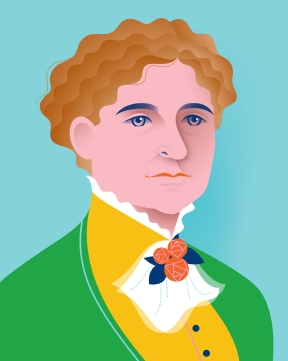
Amelia Jenks Bloomer (1818 – 1894)
Ever wonder where the old-fashioned clothing term “bloomers” came from? Well, buckle up friends, because you’re about to find out.
It’s no secret that in 19th-century polite society, women were required to dress formally in long, cumbersome dresses and skirts. Let’s just say Homer, NY native Amelia Jenks Bloomer was not comfortable with that fashion convention. In fact, she not only liked to wear a baggy pants-and-tunic outfit, but she often wrote about it in a wide-reaching women’s rights publication she edited and published.
Her articles in The Lily included illustrations, which resulted in letters flooding in from all over the country with inquiries about the “costume” and requesting patterns. Much to the dismay of conservative men and women alike, Amelia had popularized the wearing of these practical, yet revolutionary pantaloons so much so that they became forever known as ‘bloomers.’
Amelia’s activism extended well beyond dress reform. She was passionately involved in temperance issues and worked within the suffragist movement under the heavy influence of Elizabeth Cady Stanton, who wrote articles for The Lily under the pseudonym “Sunflower.”
Any visit to Seneca Falls must include a stop at the iconic “When Anthony Met Stanton”, a life-sized bronze sculpture of Elizabeth Cady Stanton and Susan B. Anthony being introduced by none other than Amelia Bloomer (wearing, of course, her signature ‘bloomers’).
Elizabeth Cady Stanton
Renowned suffragist. Principal author of the Declaration of Sentiments.
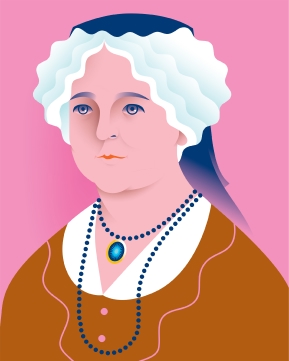
Elizabeth Cady Stanton (1815 – 1902)
Once you start learning about the 19th-century suffragists in the Finger Lakes region, it begins to feel a little like a game of Six Degrees of Elizabeth Cady Stanton. Elizabeth was well-connected and, as organizer of the first Seneca Falls Convention, was arguably the backbone of the movement. She was also the principal author of the Declaration of Sentiments proclaiming that all men and women are created equal. Elizabeth took center stage at the convention, reading this document – which included the then-controversial demand that women receive the right to vote – to the 300 women and men in attendance.
Elizabeth and Susan B. Anthony would meet and go on to become a collective force to be reckoned with, pushing the cause closer to victory. A statue stands on what is now East Bayard Street in Seneca Falls in remembrance of the initial meeting where they were introduced by women’s rights activist Amelia Bloomer. Stanton, who died just short of her 87th birthday in 1902, had never given up on the fight for women’s suffrage.
The last mark she left on the movement was a letter to President Theodore Roosevelt, urging him to “support women’s suffrage.” Eighteen years later, the 19th Amendment was passed.
Dr. Elizabeth Blackwell
First woman to receive a medical degree in the US. Relentless public health activist.
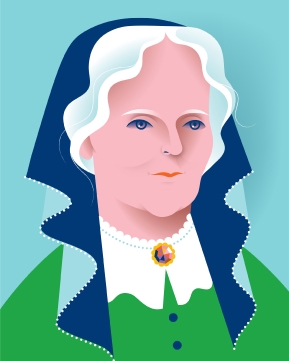
Dr. Elizabeth Blackwell (1821 – 1910)
This is a story that is likely to make your blood boil and your heart sing all at the same time. After a dying friend shared that her suffering would have been lessened had her doctor been a woman, young Elizabeth did as any certified brave woman would do, she applied to medical school. Actually, about two dozen of them.
Finally, she was accepted to New York State’s Geneva Medical College (now known as Hobart College) – as a joke. The faculty of Geneva thought it would be fun to put Blackwell’s application out for a vote among the 150 male students. The guys voted unanimously to let her in. Oops!
Elizabeth graduated at the top of her class, becoming the first female physician in the U.S. and going on to do incredible things like opening the New York Infirmary for Women and Children, training nurses for war service, and helping to develop the United States Sanitary Commission. A bronze statue of Dr. Elizabeth Blackwell can be found on the campus of Hobart and William Smith Colleges. Looks like she got the last laugh.
Emily Howland
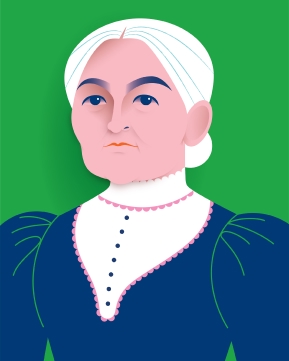
Emily Howland (1827 – 1929)
Emily Howland, who believed that education was the key to equality, devoted much of her life to teaching freed slaves to read and write. She received the first honorary doctorate granted by the State University of New York for her efforts in education – and that was before women could even attend college with men. She then went on to found or support more than fifty schools for freed African Americans.
Emily organized women’s rights lectures and meetings with Susan B. Anthony and Elizabeth Cady Stanton, gave speeches to convention crowds and to members of Congress, and even took tea with Queen Victoria.
Oh, did we mention she was also the first female bank director in the world? Yes, the world. From what we can tell about this brave woman, Emily did not waste a single day of her 102 years.
Frances Seward
Original influencer. Fierce anti-slavery advocate. Women’s rights activist.
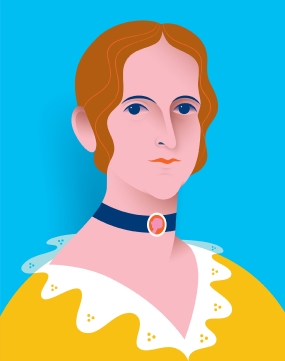
Frances Adeline Seward (née Miller; 1805 – 1865)
We like to think of Frances Seward as an early (early, early) influencer. As a woman of power and importance – her husband was William Henry Seward, a New York governor, U.S. senator, secretary of state, and close friend of Abraham Lincoln – she used her influence to lift up others.
Fiercely independent and an activist at heart, Frances carved out a striking legacy all her own. She was integral to the effort to secure property-rights protections for married women, which was a key first step in winning the right to vote. She fought for equality in all of its forms, working tirelessly to advance the twin causes of abolition and women’s rights, even turning her girlhood home at 33 South Street into a stop on the Underground Railroad.
She developed a strong bond with Harriet Tubman and played a key role in selling her a house nearby. Frances is buried in Fort Hill Cemetery in Auburn, along with Harriet and another Top Trailblazer, Martha Coffin Wright.
Harriet Tubman
Civil War hero. Self-made entrepreneur. Philanthropist.
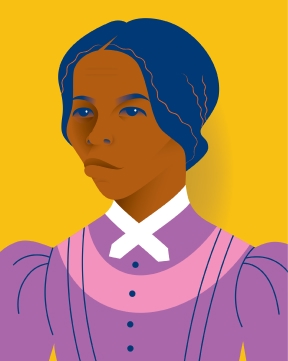
Harriet Tubman (1822 – 1913)
Harriet Tubman, born Araminta “Minty” Ross, is probably the most well-known of all the Underground Railroad’s conductors. In all of her journeys, as she once proudly pointed out to Frederick Douglass, she “never lost a single passenger.” What is not as well-known is that Harriet lived as a free woman for 50 years in Auburn, New York.
Against all odds – she was black, enslaved, disabled, and a woman – Harriet became a self-made entrepreneur, a philanthropist, an ardent suffrage supporter, and the first woman to lead an armed expedition during the Civil War. She was buried with military honors and has become an iconic brave woman, providing inspiration to women and girls throughout history.
In 2019, she was the subject of the Oscar-nominated film Harriet. Come experience her story firsthand by visiting her gravesite as well as her home and other spots where she spent many fruitful years in the Finger Lakes region.
Jikonsaseh
Mother of Nations.” Cofounder of the Iroquois Confederacy
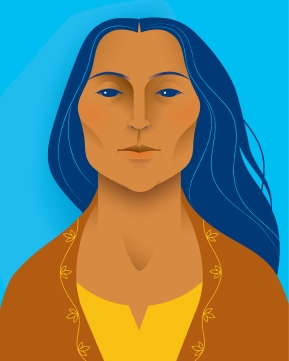
Jikonsaseh (also referred to as Jigonhsasee; exact birth date unknown)
We can’t think of a more fitting (or cooler) title for Jikonsaseh than “Mother of Nations,” since she basically created the mold for women’s equality. Working closely with Hiawatha and the Great Peacekeeper, she not only helped unify the fractured tribes of the Iroquois Confederacy, but she and her partners established the rights and responsibilities of male and female leadership roles.
While there are gender-distinct roles of leadership divided between women and men, women have equal responsibility in Haudenosaunee (Iroquois) society. The Seneca Tribe’s matrilineal social order helped inspire the 1848 Declaration of Sentiments, a document that was written centuries later and would eventually lead to women’s right to vote. This timeless culture is preserved and celebrated at the Ganondagan State Historic Site in Victor, New York.
Martha Coffin Wright
Diehard suffragist. Organizer of the first Women’s Rights Convention.
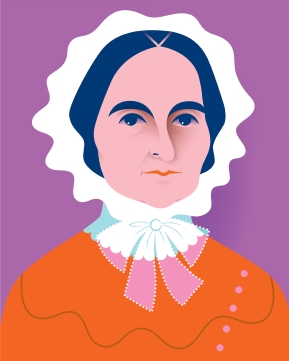
Martha Coffin Wright (1806 – 1875)
When it came to equal rights advocacy, Martha was the real deal. She joined the abolitionist movement at age 26 and opened her home as a station on the Underground Railroad, welcoming Harriet Tubman and other freedom seekers on their way to Canada. She and Harriet would remain close friends throughout the rest of their lives.
In 1848, at age 42, Martha and her slightly more famous sister, Lucretia (Coffin) Mott, joined Elizabeth Cady Stanton and two other women in organizing the first Women’s Rights Convention in Seneca Falls. Wright remained active in the suffragist and women’s rights movement for the rest of her life, working closely with Elizabeth Cady Stanton and Susan B. Anthony on both state and national levels.
Martha’s legacy, following her passing in 1875, lived on through two of her daughters and then through a granddaughter, who all continued her fight for women’s rights. Clearly, the brave-woman gene runs strong in the Wright family.
Matilda Joslyn Gage
Unapologetic free-thinker. Leading suffragist. Native American rights activist.
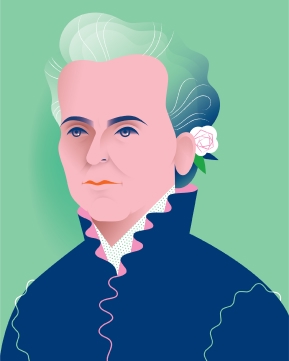
Matilda Joslyn Gage (1826 – 1898)
The more we learn about Matilda’s equal-rights activism, the more it seems she was born about a hundred years too early. She just “got it” on another level. Matilda exposed sex trafficking as well as the sexual abuse of women and children by priests. She opened her home to those fleeing slavery. She advocated for Native Nation sovereignty. And she served at the forefront of the suffrage movement alongside Elizabeth Cady Stanton and Susan B. Anthony, writing articles, giving public speeches, and leading organizations.
So, wait – why have most of us not heard of her? Apparently, Matilda’s brand of feminism was considered too radical for some of her more conservative feminist peers, so after her death she was basically erased from history. Matilda was also a gifted scientific writer, but she was denied credit for her contributions. (Shocking, we know.)
In 1995, nearly 100 years after her death, Matilda was inducted into the National Women’s Hall of Fame, and a foundation was formed to honor and properly remember this social justice warrior. Her home in Fayetteville, New York has been turned into a museum dedicated to her life and legacy. Better late than never.
Susan B. Anthony
Legendary suffragist. Abolitionist. Civil Rights leader.
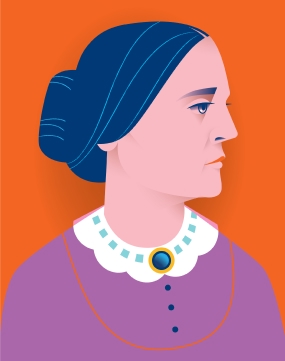
Susan B. Anthony (1820 – 1906)
Allow us to introduce you to the boss lady of women’s suffrage. Susan B. Anthony lived and breathed the movement for 40 years, making her home the hub for planning strategies, organizing campaigns, writing speeches, and preparing petitions. She knew that without the right to vote women would keep fighting the same battles for equality over and over again. (If she only knew how much this is still happening.)
Her bold activism resulted in her arrest and a controversial (aka rigged) local trial that gained legal scrutiny and national attention. This profile in courage would not be deterred from her fight to guarantee that “the right to vote shall not be denied on account of sex.”
The 19th Amendment, which became widely known as the Susan B. Anthony Amendment, was passed in 1920, fourteen years after her death. You can visit her home, museum, and gravesite in Rochester, New York. The courthouse where her trial took place is also nearby.



